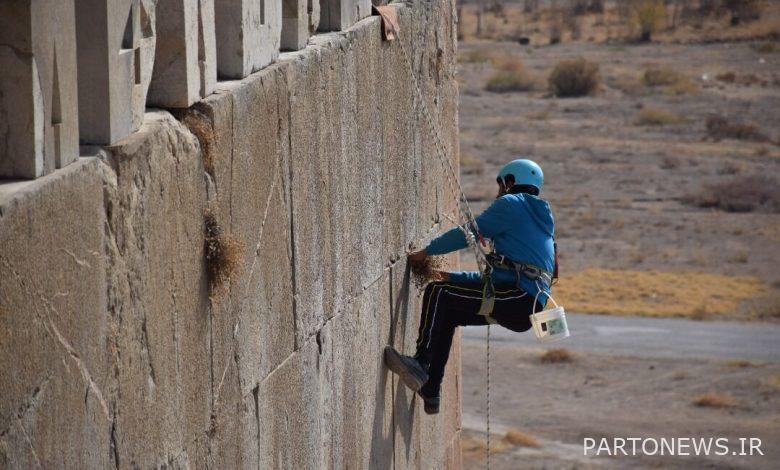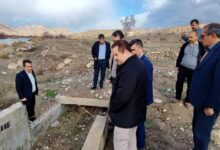The clearing of the tomb of Darius and the wall of Sefeh in Persepolis began

The director of Persepolis World Heritage Site announced on Saturday, December 18th: The operation to clean the bed under the direct supervision of conservation experts and the restoration of Dariush’s tomb and Sefeh wall in this place has started since last week. From the rock climbing team in Marvdasht city and after preparing a detailed map of the location of harmful plants and adequate training in the field of protection and preservation of works to this team, the cleanup operation under the direct supervision of conservation experts and restoration of this historic site began last week.
The director of Persepolis World Heritage Site, emphasizing the necessity and importance of seasonal clearing of plants from the surfaces of historical monuments, added: In high walls, by removing the stones from their vertical and static position, it gradually provides the conditions for the instability of the walls.
Hamid Fadaei added: “The process of soil erosion and increase of moisture in rock surfaces is another consequence of plant growth and rooting in wall surfaces, which along with the impact of other environmental factors cause erosion and destruction in rocks and therefore take a series of measures to control the necessary biological erosion.” And it is necessary.
The director of Persepolis World Base stated: “Although it is easier to remove plants on accessible rocky surfaces, including horizontal surfaces, but clearing them from vertical walls and at height is very difficult, and for this reason, a group of Experienced rock climbers of Marvdasht city and lover of cultural heritage, have helped us in clearing plants in difficult places of the area, especially on the high wall of the throne, as well as on the Achaemenid tombs in Naghsh-e Rostam.
Regarding the end of the operation, Fadai said: “This project started last week and if there is no rain, it will probably continue in the coming days.”
Mostafa Rakhshandehkho, in charge of conservation and restoration workshops in Persepolis and Naghsh-e Rostam, also pointed to the need to control various biological factors that cause the destruction of historical monuments, the need to design various programs to control them and said: to control various factors, including growth Different types of lichens, plants, shrubs that have different erosive effects, different solutions are used, and the recent program is the same.
The master of conservation and restoration continued: the oil enters the rock, one and the other in the rocks ﺗﻌﻘﯿﺐ and ﯾﻮ circles لذا, so in addition to the effect on chemical erosion of the rock, in the dimension of mechanical erosion also affects در instead of ﺳﻨﮓ Leaves that must be prevented.
Rakhshandeh Khoo added: “In this chapter of cooperation with the rock climbing group, in addition to clearing plants, dredging operations and clearing sediments of water canals located at the top of the tomb of Darius the Great are also planned.” According to him, these open canals are among the unique engineering measures that were done during the Achaemenid period in order to remove the running water caused by rain from the stone decorations of the tomb and to direct and transfer water to the sides of the tomb.
Persepolis complex, a relic of the Achaemenid era and registered in the UNESCO World Heritage List, is located 55 km north of Shiraz and within the city of Marvdasht.

